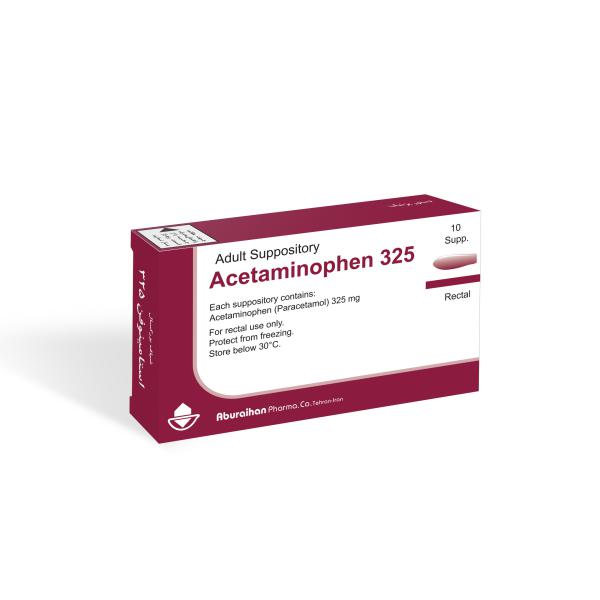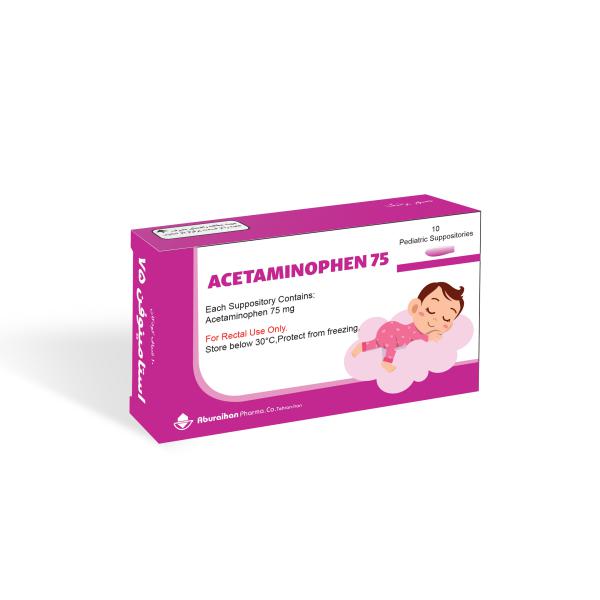Acetaminophen
Acetaminophen
suppository
Management of pain and fever
Mechanism of Action:
Antipyretic, Nonopioid analgesic agent
Method of Administration:
Pediatric:
Under 3 years old: 10-15 mg/kg, Maximum dose: 60 mg/kg3
3-6 years old: 120 mg every 4 to 6 hours
6-12 years old: 325 mg every 4 to 6 hours
Adults:
650 mg every 4-6 hours, maximum dose 4 gr daily
Notes
-Hypersensitivity to Acetaminophen or to one of the product’s excipients.
-Cases of severe hepatocellular insufficiency or severe active liver disease.
Interactions:
Alcohol, Phenobarbital, Carbamazepine, Busulfan, Warfarin, Lamotrigine, Prilocaine, Cholestyramine resin
Pregnancy and Lactation:
Pregnancy: Clinical experience of intravenous administration of Acetaminophen is limited. Reproductive studies with the intravenous form of Acetaminophen have not been performed in animals.
Acetaminophen should only be used during pregnancy after a careful benefit-risk assessment. In this case, the recommended posology and duration must be strictly observed.
Lactation: Low amounts of acetaminophen is exerted into breast milk. No undesirable effects on nursing infants have been reported. Consequently, may be used in breast-feeding women.
Warning and Precaution:
-In order to avoid the risk of overdose, one should check that other medicinal products administered along with, do not contain Acetaminophen.
-Doses higher than the recommended ones entails risk for hepatic injury, including the risk of severe hepatotoxicity and death. Do not exceed the maximum recommended daily dose of Acetaminophen. Clinical symptoms and signs of liver damage are usually first seen after two days of drug administration, with a peak seen usually after 4 to 6 days.
-Treatment with antidote should be given as soon as possible
– Acetaminophen has been associated with a risk of rare but serious skin reactions.
Anyone who develops a skin rash or reaction while using Acetaminophen l should stop the drug and seek medical attention right away. Anyone who has experienced a serious skin reaction with Acetaminophen should not take the drug again and should contact their health care professional to discuss alternative pain relievers/fever reducers.
Acetaminophen l should be used with caution in the following cases:
– Hepatocellular insufficiency, or active hepatic disease,
-Severe renal insufficiency (creatinine clearance ≤ 30 ml/min)
-Chronic alcoholism
– Chronic malnutrition (low levels of hepatic glutathione),
-Severe hypovolemia (e.g., due to dehydration or blood loss)
Adverse Reactions:
Rare: Malaise, Hypotension, Increased levels of hepatic transaminases
Very rare: Cases of hypersensitivity reactions ranging from dyspnea, hypotension and skin rash or urticaria to anaphylactic shock have been reported. Clinical signs include swelling of the face, mouth and throat, respiratory distress, urticaria, rash and pruritis.
Discontinue immediately if symptoms associated with allergy or hypersensitivity occur.
Cases of erythema, flushing, pruritus and tachycardia have been reported.
Storage:
Store below 30 and protect from light and moisture.



